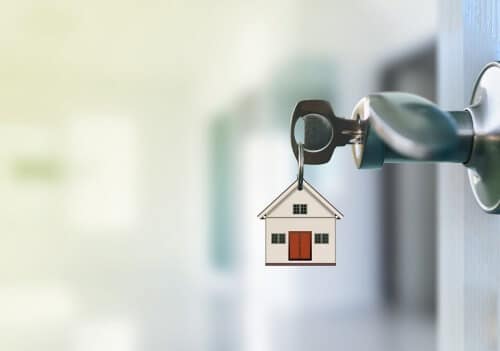
Real estate has had a banner year as mortgage rates continue to be low, more people are looking to buy than those who are selling and home prices continue to rise.
Even before the pandemic began, the U.S. residential real estate market was short on houses, with more people looking to buy than those who were selling. And yet, unlike the 2008 recession, any economic woes related to the pandemic did not undercut housing prices. If anything, real estate had a banner year as home prices continued to rise. In April of this year, the median sale price of existing homes rose by 19.1 percent to a record high of $341,600.
There are several reasons we haven’t seen a repeat of the housing crisis that we experienced during the Great Recession. Today’s market is different from 2007, when the economic decline was launched by a housing bubble that sent many homeowner values underwater – followed by job losses and the inability to pay their mortgage. This time around, the government stepped in to ensure Americans didn’t lose their homes when they lost their jobs. The stimulus-relief packages included a moratorium on foreclosures and evictions. This, too, has contributed to the low inventory of existing homes, which normally would be put up for sale when owners become cash strapped.
The Homebuyers’ Market
However, in addition to the cash-strapped – we now have the cash-rich. Among the gainfully employed, savings rates increased during 2020. This means there are now several types of eager homebuyers: millennials trying to buy their first home; mid-career professionals looking to trade up; and retirees (or near-retirees) looking to make a cash offer for a smaller or second home.
The coronavirus contributed to this fiercely competitive market of buyers. Some are looking to take advantage of the newly mainstreamed remote work model and move to rural areas for a more affordable lifestyle. People who are nearing retirement are rethinking moves to large metropolitan areas or continuum of care retirement communities, where future outbreaks can spread more quickly.
The point is, there are millions of people looking to buy a home right now and not enough housing stock There are 72 million millennials alone, the oldest of who are approaching their 40s, with Generation Z right at their heels. Over the next 10 years, the demand for first-time homebuyers alone will persist regardless of how conditions change in the housing market.
See “Understanding and Applying the Home Office Deduction”
The Home-Sellers’ Market
While the buyers’ market is booming with demand, the sellers’ market is starting to grow as well, just not as fast. Rising real estate values due to low inventory have presented an attractive opportunity to cash-in on home equity. In fact, according to a recent NerdWallet survey, about
17 percent of today’s homeowners say they plan to put their home on the market within the next year and a half.
The seller’s market is boosted by historically low mortgage rates, which when compared to renting make taking out a home loan even more appealing. Sellers also benefit from the near-desperation of buyers, many of whom are willing make offers before seeing the property, for as-is condition and above offer price. Not only can sellers take their pick of multiple offers, but they can often skimp on home repairs and upgrades before putting their house on the market.
In recent months, existing homes have stayed on the market for an average of only 20 days. Sellers also have the luxury of making their buyers wait under contract until the owner can buy another home. But here’s the tricky part: due to low inventory, it can be very difficult to find a replacement. Sellers who become buyers enter the fray of contract wars just like everyone else.
See “Homeownership and taxes: Things taxpayers should consider when selling a house.”
New Home Building
The single-family homebuilding industry recovered from last year’s economic decline quickly. In March of this year, new home starts swelled 15.3 percent to 1.238 million units. But even with the surge, real estate agents say that new builds need to range between 1.5 million and 1.6 million units per month to meet demand.
Unfortunately, one factor that is holding this market back is access to building materials. Low supply of lumber due to increased demand for new homes and renovations has catapulted lumber prices to record highs. According to the National Association of Home Builders, the cost of lumber has driven up the price of the average new single-family home by more than $35,000 within the past year.
While more inventory will come onto market as people emerge from their lockdowns and the economy fully reopens, one thing is certain: demand in the home-buying market is expected to remain high among Millennials and Gen Z for at least another decade. The momentum for high prices is expected to continue through 2021, so it may be a better time to sell than buy.
Disclaimer
These articles are intended to provide general resources for the tax and accounting needs of small businesses and individuals. Service2Client LLC is the author, but is not engaged in rendering specific legal, accounting, financial or professional advice. Service2Client LLC makes no representation that the recommendations of Service2Client LLC will achieve any result. The NSAD has not reviewed any of the Service2Client LLC content. Readers are encouraged to contact their CPA regarding the topics in these articles.

